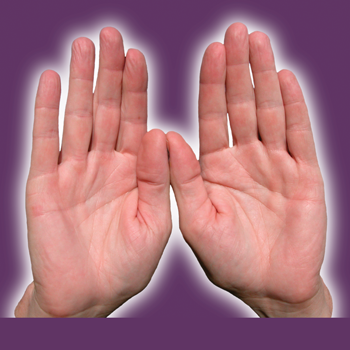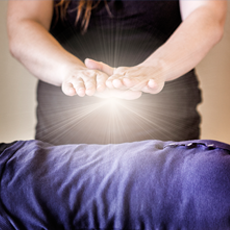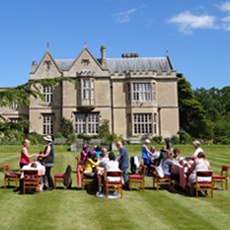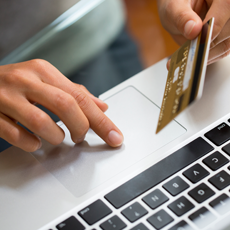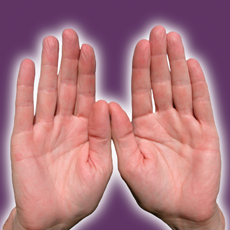by Amy Z. Rowland
Outside Sahoji Temple in Tokyo , there is a very tall stone inscribed with Japanese calligraphy that gives an account of Mikao Usui's life. This stone, called the Usui Memorial, was erected soon after Usui Sensei’s death in March 1926. The author of the inscription, one of Usui’s students, concludes the tribute with this remarkable expression of hope: "If Reiki can be spread throughout the world it will touch the human heart and the morals of society. It will be helpful for many people, and will not only heal disease, but also the Earth as a whole."(1)
Now, just over eighty years after those words were written, we stand at a profound moment of opportunity. Millions of people practice Reiki worldwide. For decades, Reiki has been slowly spreading and gently healing individuals, families, and communities. Many Reiki practitioners have witnessed miracles. Some acknowledge that Reiki has healed their hearts, their minds, their souls. Can we take the next step? Through our commitment to Reiki practice and to daily reflection on the Reiki Ideals, can we affect human morality? Can we bring about healing of “the Earth as a whole”?
The task seems overwhelming. To the individual mind, even just one of the environmental issues we face seems enough to confound our problem-solving ability. What can we do, we wonder, to reverse global warming and the melting of the ice caps and all the havoc with the world's weather that this ecological imbalance creates? And we recognize, of course, that the Earth needs healing not only on the physical level, but on the mental, emotional, and spiritual levels as well. How can we help to heal the ongoing war in Iraq or ease the suffering of those in Darfur who have survived “ethnic cleansing”? Such thoughts may tempt us to despair.
Yet we have Reiki, and experience with Reiki teaches us that the Reiki energy taps an infinite – and infinitely powerful – source of healing, the same source that Hawayo Takata sometimes called "God-power." Knowing that we are attuned to Reiki, that it flows through us and radiates outward from us, we may feel encouraged to believe that healing of "the Earth as a whole" is possible. In gratitude for this chance to offer healing, releasing the outcome for the highest good, we figuratively roll up our sleeves, ready to begin. But where do we start?
Paradoxically, the history of Reiki tells us to start at home by healing ourselves and by claiming peace in our own lives. The author of the Usui Memorial writes that at the end of his meditation on Mount Kurama, Mikao Usui "...suddenly felt the great Reiki energy at the top of his head, which led to the Reiki healing system. He first used Reiki on himself..." (This accords with Hawayo Takata’s story of Usui Sensei’s life as well, familiar to the many Reiki practitioners who have been taught in the Usui Shiki Ryoho tradition.) Later, he writes, “To begin spreading the Reiki system, it is important to start from a place close to you (yourself), don't start from something distant such as philosophy or logic.” Healing begins within, and according to both the Japanese and Western accounts of Usui Sensei’s life, Mikao Usui first used Reiki on himself, then on others.
Reiki teachers worldwide continue to reinforce the importance of self-treatment in Reiki I classes because when the practitioner is well, he or she will be more effective in treating clients. Yet there are other reasons Reiki self-treatment is important: not only does Reiki heal our physical imbalances, but it also gently and gradually heals our emotional, mental, and spiritual wounds, often with such subtlety that we are not even aware of the healing. Only in retrospect do we realize that we are living each day with a more positive attitude, a sense of greater well-being, an exhilarating awareness of freedom.
Reiki self-treatment also teaches us about peace, for as we "listen" to our hands, focusing our attention on the flow of energy, our thoughts slow and our minds become quiet. Of course, if we are “band-aiding,” informally treating ourselves as we sit behind the wheel of a car stuck in rush hour traffic, we will not be giving our complete attention to the flow of energy, nor should we under these circumstances! Yet when we claim the time to treat ourselves each day, we soon learn to appreciate Reiki’s ability to bring us into our own peaceful center. With this awareness of our own inner peace, we are better able to live our lives, and we are able to live better lives...
1 The words of the inscription were first translated and published in English by German Reiki Master Frank Arjava Petter in his book, Reiki Fire: New Information about the Origins of the Reiki Power, a Complete Manual Twin Lakes, WI: Lotus Light, 1997). Peter relied on Masano Kobayashi and Chetna M. Kobayashi, his then mother-in-law and wife, respectively, for the translation.
This article appeared in the Winter 2007 issue of Reiki News Magazine.


